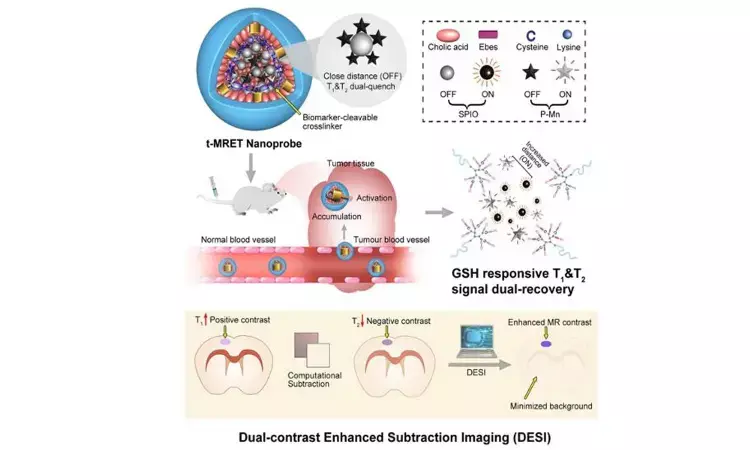- Home
- Medical news & Guidelines
- Anesthesiology
- Cardiology and CTVS
- Critical Care
- Dentistry
- Dermatology
- Diabetes and Endocrinology
- ENT
- Gastroenterology
- Medicine
- Nephrology
- Neurology
- Obstretics-Gynaecology
- Oncology
- Ophthalmology
- Orthopaedics
- Pediatrics-Neonatology
- Psychiatry
- Pulmonology
- Radiology
- Surgery
- Urology
- Laboratory Medicine
- Diet
- Nursing
- Paramedical
- Physiotherapy
- Health news
- Fact Check
- Bone Health Fact Check
- Brain Health Fact Check
- Cancer Related Fact Check
- Child Care Fact Check
- Dental and oral health fact check
- Diabetes and metabolic health fact check
- Diet and Nutrition Fact Check
- Eye and ENT Care Fact Check
- Fitness fact check
- Gut health fact check
- Heart health fact check
- Kidney health fact check
- Medical education fact check
- Men's health fact check
- Respiratory fact check
- Skin and hair care fact check
- Vaccine and Immunization fact check
- Women's health fact check
- AYUSH
- State News
- Andaman and Nicobar Islands
- Andhra Pradesh
- Arunachal Pradesh
- Assam
- Bihar
- Chandigarh
- Chattisgarh
- Dadra and Nagar Haveli
- Daman and Diu
- Delhi
- Goa
- Gujarat
- Haryana
- Himachal Pradesh
- Jammu & Kashmir
- Jharkhand
- Karnataka
- Kerala
- Ladakh
- Lakshadweep
- Madhya Pradesh
- Maharashtra
- Manipur
- Meghalaya
- Mizoram
- Nagaland
- Odisha
- Puducherry
- Punjab
- Rajasthan
- Sikkim
- Tamil Nadu
- Telangana
- Tripura
- Uttar Pradesh
- Uttrakhand
- West Bengal
- Medical Education
- Industry
New double-contrast technique may help diagnose small tumors on MRI

CALIFORNIA - Researchers at the University of California, Davis offer a significant advance in using magnetic resonance imaging to pick out even very small tumors from normal tissue. The work is published May 25 in the journal Nature Nanotechnology.
Distance-dependent magnetic resonance tuning (MRET) technology enables the sensing and quantitative imaging of biological targets in vivo, with the advantage of deep tissue penetration.
Chemical probes that produce a signal on magnetic resonance imaging (MRI) can be used to target and image tumors. The new research is based on a phenomenon called magnetic resonance tuning that occurs between two nanoscale magnetic elements. One acts to enhance the signal, and the other quenches it.
Previous studies have shown that quenching depends on the distance between the magnetic elements. This opens new possibilities for non-invasive and sensitive investigation of a variety of biological processes by MRI.
The UC Davis team created a probe that generates two magnetic resonance signals that suppress each other until they reach the target, at which point they both increase contrast between the tumor and surrounding tissue. They call this two-way magnetic resonance tuning (TMRET).
Combined with specially developed imaging analysis software, the double signal enabled researchers to pick out brain tumors in a mouse model with greatly increased sensitivity.
"It's a significant advance," said senior author Yuanpei Li, Associate Professor of biochemistry and molecular medicine at the UC Davis School of Medicine and Comprehensive Cancer Center. "This could help detect very small early-stage tumors."
Two magnetic components
The probe developed by the UC Davis team contains two components: nanoparticles of superparamagnetic iron oxide (SPIO), and pheophorbide a-paramagnetic manganese (P-Mn), packaged together in a lipid envelope. SPIO and P-Mn both give strong, separate signals on MRI, but as long as they are physically close together those signals tend to cancel each other out, or quench. When the particles enter tumor tissue, the fatty envelope breaks down, SPIO and P-Mn separate, and both signals appear.
Li's laboratory focuses on the chemistry of MRI probes and developed a method to process the data and reconstruct images, which they call double-contrast enhanced subtraction imaging or DESI. But for expertise in the physical mechanisms, they reached out to Professors Kai Liu and Nicholas Curro at the UC Davis Department of Physics (Liu is now at Georgetown University). The physicists helped elucidate the mechanism of the TMRET method and refine the technique.
The researchers tested the method in cultures of brain and prostate cancer cells and in mice. For most MRI probes, the signal from the tumor is up to twice as strong as from normal tissue - a "tumor to normal ratio" of 2 or less. Using the new dual-contrast nanoprobe, Li and colleagues could get a tumor-to-normal ratio as high as 10.
Li said the team is interested in translating the research into clinical use, although that will require extensive work including toxicology testing and scaling up production before they could apply for investigational new drug approval.
for further references logon to:
Dr Kamal Kant Kohli-MBBS, DTCD- a chest specialist with more than 30 years of practice and a flair for writing clinical articles, Dr Kamal Kant Kohli joined Medical Dialogues as a Chief Editor of Medical News. Besides writing articles, as an editor, he proofreads and verifies all the medical content published on Medical Dialogues including those coming from journals, studies,medical conferences,guidelines etc. Email: drkohli@medicaldialogues.in. Contact no. 011-43720751


